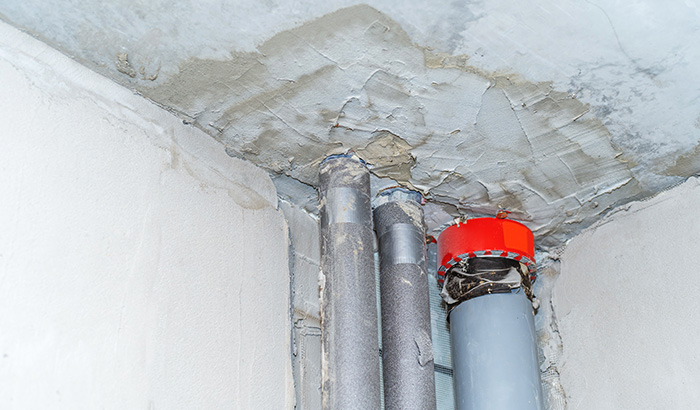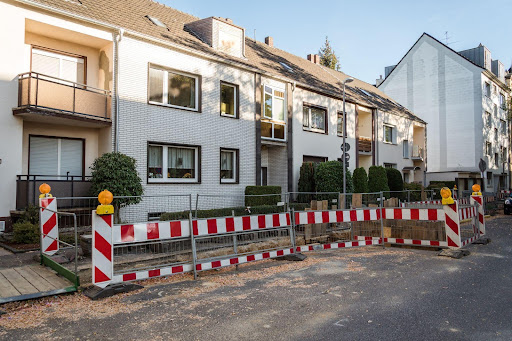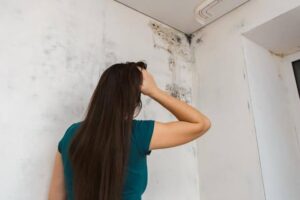Dealing with sewage backup feels like a nightmare. The unpleasant odors, damage to your beloved home, and those hefty repair bills are overwhelming. And it’s not just about the inconvenience; it’s a serious health hazard due to harmful bacteria and contaminants lurking around.
Recognizing the warning signs early on is critical to tackling them head-on and stopping them from becoming major disasters.
In this blog, you’ll find enlightening information about various red flags that scream, “You need sewage restoration!” — be it those nasty smells, water draining slower than a snail, or those oddly lush patches in your yard. We’ll also explore why acting on time is crucial and what could go wrong if these issues are brushed under the rug.
It’s not all doom and gloom, though. You’ll also learn about preventative steps and the importance of regular check-ups to keep your sewage system running smoothly, ensuring a healthy and safe living environment.
So, whether you’re a homeowner determined to protect your sanctuary or just curious to learn more about maintaining a home, this blog is packed with valuable insights and handy tips on everything sewage restoration and care. Dive in and empower yourself with the knowledge to keep sewage woes at bay!
What Is Sewage Restoration?
Sewage restoration refers to the process of repairing and restoring a property after it has experienced damage due to a sewage backup, overflow, or related issue. Sewage problems arise from blockages, leaks, or failures in the sewage system, leading to contaminated water being released.
The restoration process is crucial to mitigate health risks, prevent structural damage, and restore the affected area to its original condition.
Restoration involves assessment, inspection, containment, safety measures, removing sewage and contaminated materials, cleaning, disinfection, drying, dehumidification, etc. It’s a long list because there’s a lot to do!
Importance of Timely Sewage Restoration
It’s essential to take care of sewage restoration quickly. Otherwise, your health, property, and the environment could be at risk. And we don’t want that!
Health Protection
- Prevention of diseases: Sewage water is laden with bacteria, viruses, and other pathogens that can cause serious illnesses, such as Hepatitis A, E. coli infections, and gastrointestinal disorders. Timely restoration helps in mitigating the risk of these diseases.
- Mold prevention: Quick removal of sewage water and moisture reduces the risk of mold growth, which can lead to respiratory issues and allergic reactions.
Property Preservation
- Structural integrity: A delay in restoration might lead to the deterioration of building materials, compromising the property’s structural integrity.
- Value retention: Properties that undergo prompt and proper restoration are more likely to retain their value compared to those with unresolved sewage issues.
- Aesthetic maintenance: Quick restoration helps prevent permanent stains and odors, maintaining the property’s aesthetic appeal.
Environmental Conservation
- Soil and water contamination: Timely intervention prevents the leakage of contaminants into the soil and water bodies, protecting the environment and aquatic life.
- Waste management: Proper disposal of contaminated materials during restoration helps reduce environmental pollution.
Signs Indicating You Need Sewage Restoration
- Unpleasant odor: You might notice an unpleasant, musty, or foul odor coming from your drains, toilets, or other plumbing fixtures. The odor usually results from blockages or backups in the system that allow sewer gases to escape into the property. It’s important to address the problem quickly so the odor doesn’t spread everywhere or make someone sick.
- Slow draining: Water draining slowly from sinks, bathtubs, or showers might indicate a potential blockage in the sewage system.
Slow draining is usually caused by obstructions such as hair, grease, or other debris accumulating. Persistent slow draining can lead to complete blockages, causing water and sewage backups and potentially damaging the property.
- Sewage backups and overflows: If sewage water backs up into sinks, toilets, or bathtubs, it is a clear sign of a severe problem.
Backups and overflows generally occur due to blockages or failures in the sewage system, preventing the normal flow of wastewater. Sewage backups can cause extensive damage to the property and pose severe health risks due to the presence of contaminants.
- Mold growth: The appearance of mold on walls, ceilings, or floors can indicate a sewage issue. Mold thrives in moist environments, and its growth can be triggered by leaks or moisture from sewage problems.
Mold exposure can lead to respiratory problems, allergic reactions, and other health issues, especially for individuals with pre-existing conditions.
- Lush green patches in your yard: Unusually lush and green patches in the yard can signal a sewage leak underground. Sewage water acts as a fertilizer, causing enhanced growth of grass and plants in the affected area. Underground leaks can contaminate the soil and groundwater and may lead to more severe sewage system failures if not addressed.
- Foundation cracks and sinkholes: If you’re noticing cracks in your foundation or sudden sinkholes forming, pay attention, as if this could be a sign of sewage issues.
These can occur when a sewage leak erodes the soil underneath the foundation, compromising its stability. The constant moisture from the leak can also weaken the building materials, leading to cracks and structural damage.
If not addressed promptly, these issues can escalate, posing a significant risk to the property’s structural integrity and potentially leading to catastrophic failures. Repairing such damage can be extensive and costly.
- Increased pest activity: A sudden increase in the presence of pests such as rodents, cockroaches, and flies might indicate sewage problems. Pests are attracted to the moisture and availability of food in sewage water. A leak or backup provides an ideal environment for pests to thrive.
Increased pest activity can lead to the spread of diseases and can also cause damage to the property. It is crucial to address the root cause of the pest infestation to control it effectively.
- High water bills: An unexpected and unexplained increase in water bills can indicate a hidden leak in the sewage system. When there is a leak in the sewage system, there is a continuous loss of water, which can significantly increase water consumption, reflecting higher water bills.
Not only does this lead to financial loss due to elevated bills, but it also results in water wastage. Identifying and repairing the leak is essential to prevent further loss and damage.
At the first sign of any of these issues, it is crucial to act immediately, inspecting the property for potential sewage problems and seeking professional help if needed.
Professional sewage restoration services can accurately assess the damage, perform necessary repairs, and restore the property to its original condition, preventing long-term damage and health risks.
Preventative Measures and Regular Maintenance
Preventative measures and regular maintenance are crucial components in avoiding sewage problems and ensuring the longevity and functionality of the sewage system. Here’s a detailed look at the steps and practices that can help in preventing sewage issues:
- Regular inspections: Conduct inspections of the sewage system early to identify any potential issues. Seek professional services to thoroughly inspect the system’s visible and hidden components.
- Properly disposing of waste: Avoid flushing non-biodegradable items such as wipes, sanitary products, and plastic, which easily cause blockages. Dispose of grease and cooking oils properly, not down the drain, to prevent buildup and blockages.
- Tree root maintenance: Plant trees at a safe distance from sewage lines to prevent root intrusion. Install root barriers to redirect tree roots away from sewage pipes.
- Pipe maintenance: Regularly clean the pipes to remove any buildup of debris and prevent blockages. Promptly repair any identified leaks to avoid water loss and damage to the surrounding area.
- Installing backwater valves: Install backwater valves to prevent sewage from flowing back into the property during heavy rainfall or city sewer backup. Ensure that backwater valves are functioning properly through regular checks.
- Sump pump maintenance: Test the sump pump regularly to ensure it operates correctly. Have a battery backup for the sump pump to prevent failures during power outages.
- Water consumption monitoring: Regularly check water bills for any unexplained increases, which could indicate a leak. A water meter helps monitor water usage and identifies unusual consumption patterns.
- Landscaping and drainage: Ensure the property is appropriately graded to direct water away from the foundation. Regularly clean and maintain gutters and downspouts to prevent water from pooling around the foundation.
Implementing these preventative measures and maintaining the sewage system regularly can significantly reduce the risk of sewage problems, saving property owners like you from costly repairs and health hazards.
Sewage Backup Restoration With Total Flood and Fire Restoration
Don’t let sewage issues wreak havoc on your property and well-being! If you’ve noticed any of the signs mentioned in this blog, it’s time to act swiftly. Contact Total Flood and Fire Restoration, your trusted partner in resolving sewage troubles.
Our team of experts is equipped with advanced technology and extensive knowledge to address your concerns efficiently, ensuring your home is restored to its pristine condition.
We prioritize your health and safety, offering prompt and reliable services to mitigate the risks associated with sewage problems. Don’t compromise the integrity of your property and the health of your loved ones.
Reach out to Total Flood and Fire Restoration today at 385.483.2109 for a thorough inspection and high-quality sewage restoration services. Let us help you maintain a clean, safe, and harmonious living environment!








